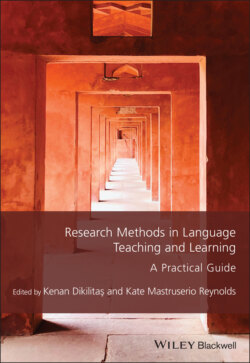Читать книгу Research Methods in Language Teaching and Learning - Группа авторов - Страница 52
Sampling
ОглавлениеThe method used to sample participants is critical in designing research. The quality of a research study is partly determined by the appropriateness of its sampling method. This becomes more critical in grounded theory because it relies on research data as a means to develop theories. Therefore, it is essential to collect data from the right people. Morse (2007) defines excellent participants as individuals who have been through, or observed, the experience under investigation and asserts that having excellent participants is key to developing comprehensive and dynamic theories.
Two sampling methods are common in grounded theory – convenience sampling and purposeful sampling. Convenience sampling selects participants on the basis of accessibility and serves the purpose of identifying the scope of research at the beginning of the study (Morse, 2007). This research was based on convenience sampling because it was difficult for me to conduct the study in any other institution (Richards, 2003). I selected the particular class because, compared to other classes, its members were more experienced learners of EFL as they had taken a one-year preparatory class in the previous year. The research sample included the 32 students in the class as well as the teacher; I collected data from her throughout the term and we worked collaboratively to design the content of the following class by taking into account the data collected from the students. The convenience sampling method enabled me to define the scope of my research, in that I revealed issues that seemed to delay student engagement in speaking activities. In doing so, I used my observation field notes where I recorded the classroom behaviors of those students who volunteered to take part in the interviews.
In the second stage of research, interviewees were sampled using the purposeful sampling method. This method is important in grounded theory as it ensures that the research sample has specific characteristics. I employed a process of maximum variation sampling (Richards, 2003). Based on my interpretation of the data collected in the previous stage, I invited three students who were positive about their self-confidence, classroom participation and perceived speaking competence, and three students who were negative about these aspects. Thanks to this, I ensured diversity in my sample in order to develop the theory by taking into account varied perspectives.
